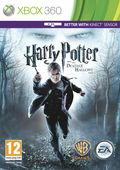You can trust VideoGamer. Our team of gaming experts spend hours testing and reviewing the latest games, to ensure you're reading the most comprehensive guide possible. Rest assured, all imagery and advice is unique and original. Check out how we test and review games here
Between famously refusing to allow development on any official Harry Potter RPGs and threatening legal action on anyone who violates the IP, J.K. Rowling has guarded the Potter license in a way that makes George Lucas’ protection of Star Wars look like he sends gold-plated champagne to everyone who Photoshops a picture of Chewbacca into an animated GIF. You might remember Rowling’s lawsuit from back in 2008 that had her shutting down distribution of an independent Harry Potter lexicon, and similarly Warner Brothers’ lawsuit against a Bollywood film with a name that only vaguely sounded like its own Potter film’s title. Rowling’s material seems like the perfect candidate for a game environment, but it’s being protected in such a way that makes it incredibly difficult to develop anything more than a film tie-in.
Deathly Hallows might have been marketed as an attempt to make a game that resonates with Potter’s maturing audience, but it still hasn’t escaped that tie-in status. Occasionally EA Brightlight manages to approach the canon with traditional shooter tropes, and when it works well it comes off like a relatively clever take on the genre. There’s the issue of death, for example: Potter isn’t allowed to die at any point in the games because it would be at odds with the canon, so Brightlight tries to bypass this with a decidedly vague fade-to-black-and-white tactic – a spin on the ‘Red Ring’ health system that you’ll see in any standard shooter, as the player loses health over time.
However, the game never takes hold of the genre full force. You’re still just dealing with the story of a boy who can just do a bit of magic, with Potter now on the run with a plan to find and destroy Voldemort’s Horcruxes – objects that retain pieces of his soul. He, Hermione and Ron have left Hogwarts to take what they’ve learned at school and put it to some use against the magic Fascists over at the Ministry of Magic, and then eventually take out Volde himself. The result is a game that tries to balance two different frames of reference.
One takes it down the path of Potter’s endgame, which has been edging increasingly further toward darker themes the closer it gets to its last chapter. The other tries to take on Harry from a shooter perspective, to stay relevant amongst the demographic of now-teenagers who have grown up with the series.
What you eventually receive is a limited third-person shooter that never innovates beyond the level of a film tie-in, but one that astutely targets a modern audience of Potter fans. In essence, this means it tries to bring in a few modern ideas from other shooters but stops short of making these features anything more than sort of functional.
For example, targeting an enemy will give you the opportunity to take a headshot – A headshot in a Potter game! Imagine that! – but only sometimes. Your reticule will immediately snap to either the body or the head of an enemy without giving you the ability to move it more precisely; this leaves you with a fully functioning combat system with a level of complexity aimed at a particular age group – one that still hasn’t worked out how to play anything more in-depth than an extended shooter tutorial. Depending on how you take the game – as just another Potter tie-in, or as Potter the Shooter – then this style of easy-does-it attacks will get a slightly different response.
Generally speaking the game doesn’t hide its simplicity. You might have a decent enough reservoir of spells to tap into from the weapon wheel menu, but you can easily finish the game using Stupefy, the first spell the game grants you. Some enemies require a bit more variation with your spells: the fairies, for example, can only really be dealt with by throwing a potion at them that slows their speed, allowing you to take them out one-by-one using any basic spell.
And here’s another bone the game throws you: the four-points system. This is a re-castable cookie crumb trail that functions as a very temporary roadway sign, directing you down the right path within each supremely linear environment. You might be asked to explore a house where most doors and exits are locked, leaving little to really explore at all. But regardless, Four Points can be a damn good system – if only because you can control it. Where some games would use a cookie crumb feature as a stand-in nanny to grip your hand like a vice and drag you to your next objective, Four Points only points you in the right way when you bother to cast it, and it only directs you down that route briefly before the glowing line disappears.
But there are bigger issues elsewhere. Deathly Hallows is, in theory, a game of two modes – allowing you to either stealth your way through areas without fighting, or to focus completely on combat, depending on your play style. I say “in theory” because Deathly Hallows doesn’t seem to use stealth as a different way of reaching objectives – just as an alternate way of getting to inevitable combat. You might stealth toward the middle of a camp of enemies to save a locked-up Muggle, but there are no prizes for guessing what happens once you’ve unveiled yourself, rendering your previous stealthing pointless.
Considering most missions work identically – run through an area and have intermittent fights along a linear path until you reach your objective – it’s tedious that you’re unable to deal with these quests in different ways, and the stealth system is successful only in the sense that it hints at a more complex and interesting game.
Combat has a similar issue. On the one hand it’s a clever mash-up of traditional shooter tropes. The AI might not be particularly clever, but cover degrades over time – meaning you inevitably have to move from area to area if you want to survive against big groups. On the other hand, and this is important, it’s almost impossibly buggy. Harry regularly slides across the room, in and out of combat, whether you’ve got a hand on your controller or not. Ron and Hermione will often shoot at walls and non-existent enemies, while genuine foes will merge into walls. And these issues bleed through to Kinect. Potter is actually one of the only dramatic action games available for the add-on, designed as a basic on-rails shooter. But occasionally Harry will randomly turn to face the camera, shooting his wand toward the screen while magic flies out behind him. At other times he stops randomly in areas where enemies are behind walls and impossible to hit, refusing to move on from the area until they were cleared.
The game is full of good ideas tethered to a slop of bugs, but more significantly it’s never much of anything. It’s never varied enough to have interesting combat; it’s never open enough to let you explore; it’s linear but never driven enough by its narrative to be an enthralling, story-driven title. It’s a impressively dark film tie-in, and an ambitious one at that, but don’t expect anything more.
Harry Potter and the Deathly Hallows – Part 1 the videogame
- Platform(s): Nintendo DS, PC, PlayStation 3, Wii, Xbox 360
- Genre(s): Action

/https://oimg.videogamer.com/images/da54/harry_potter_and_the_deathly_hallows_a_part_1_7.jpg)






